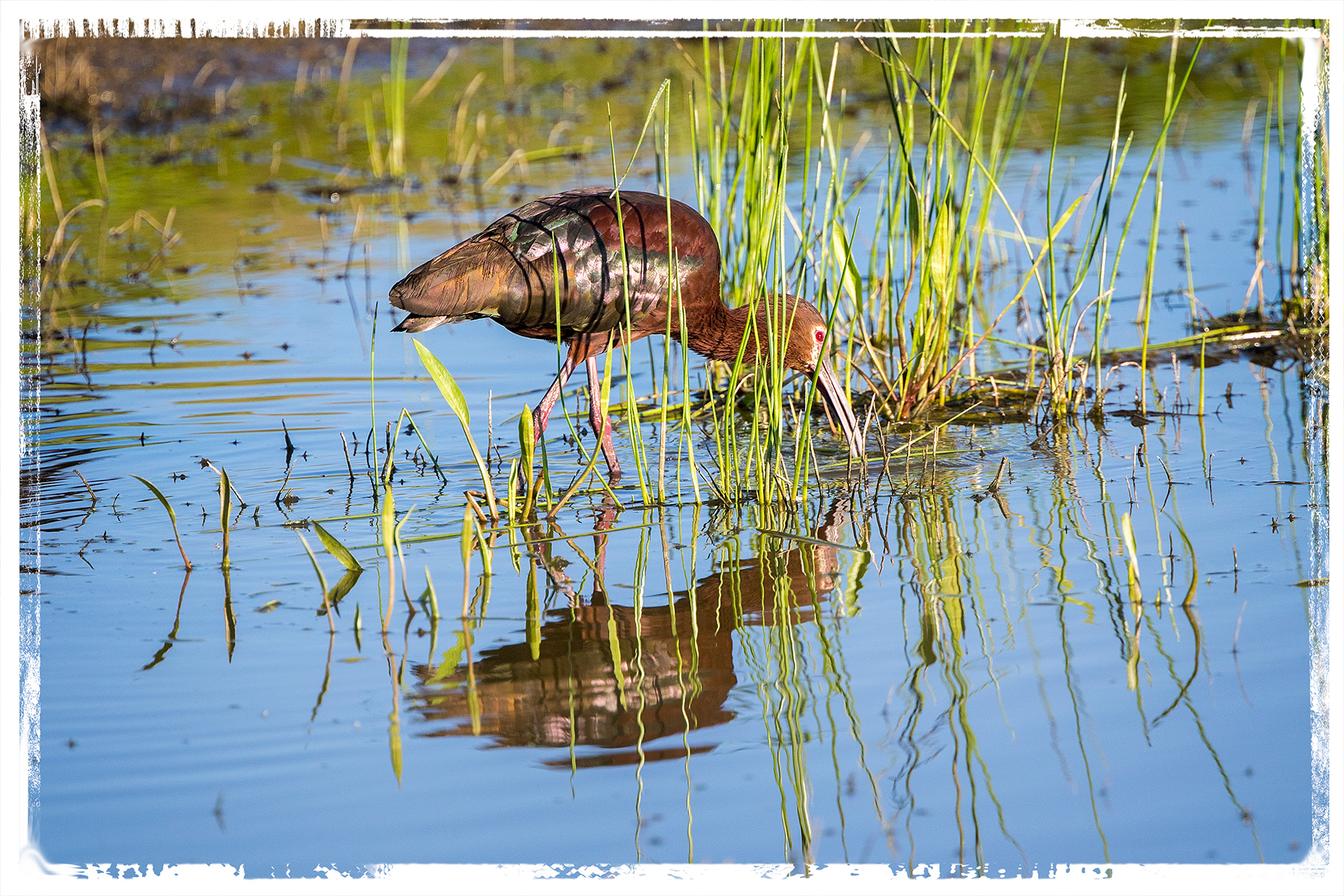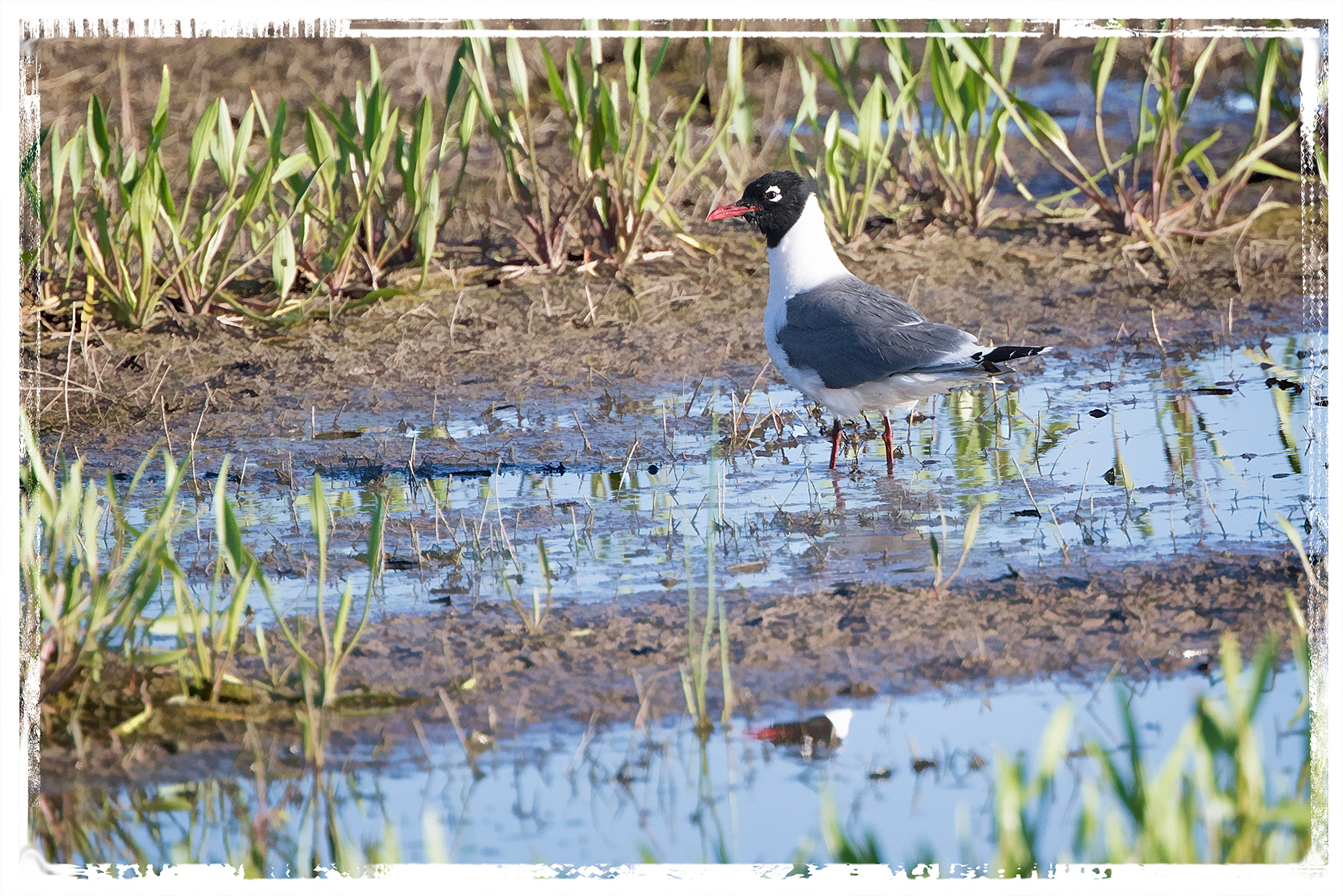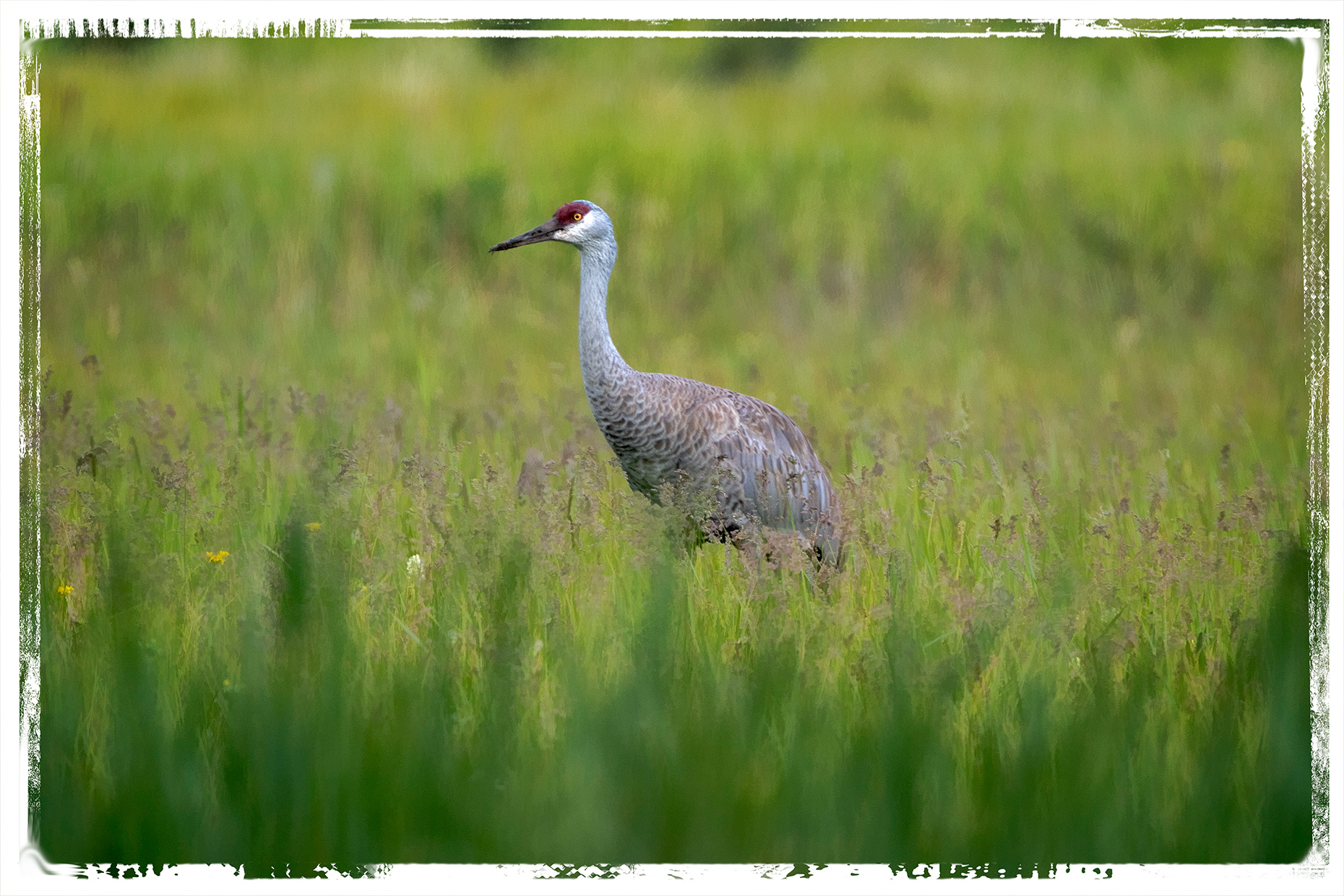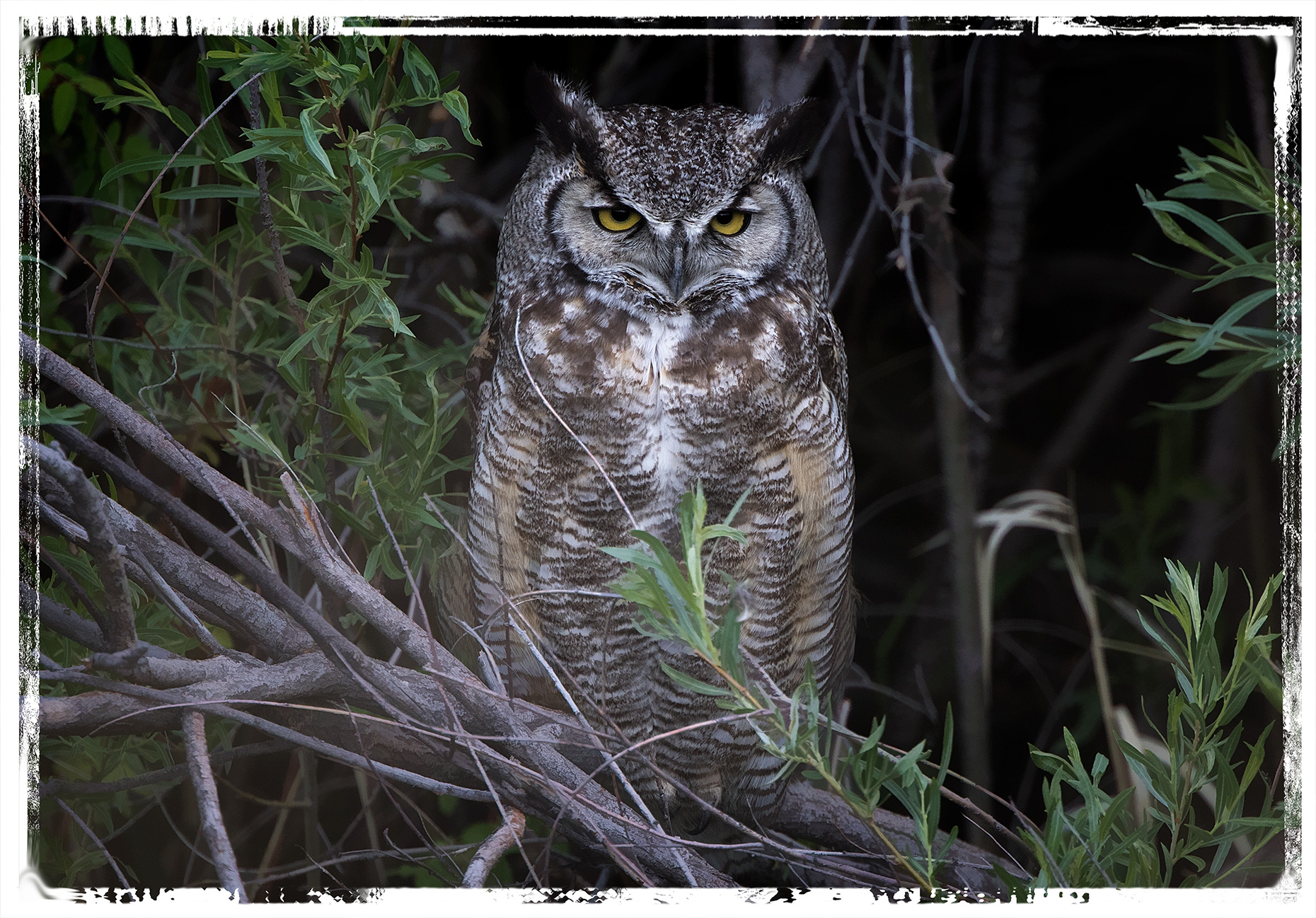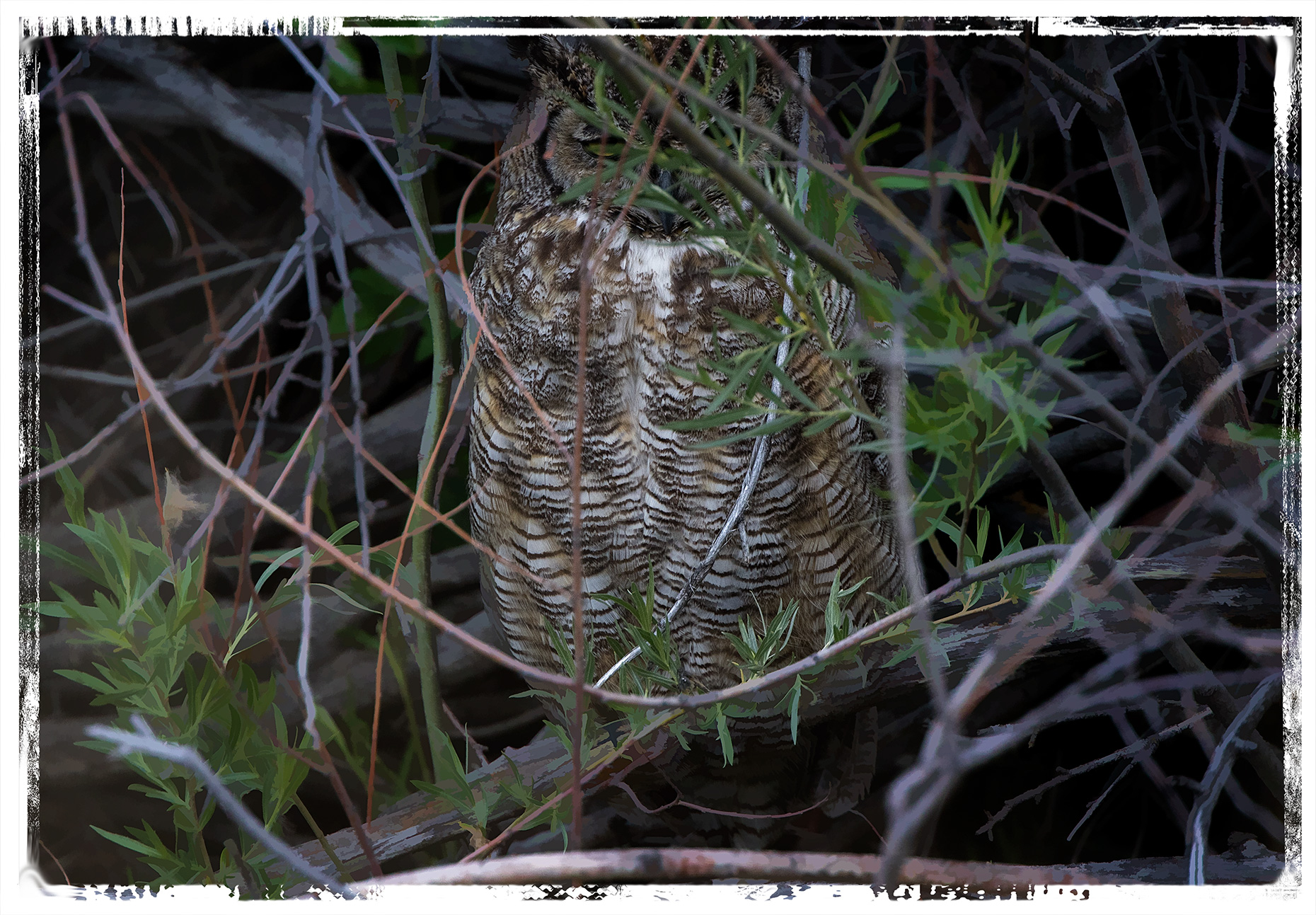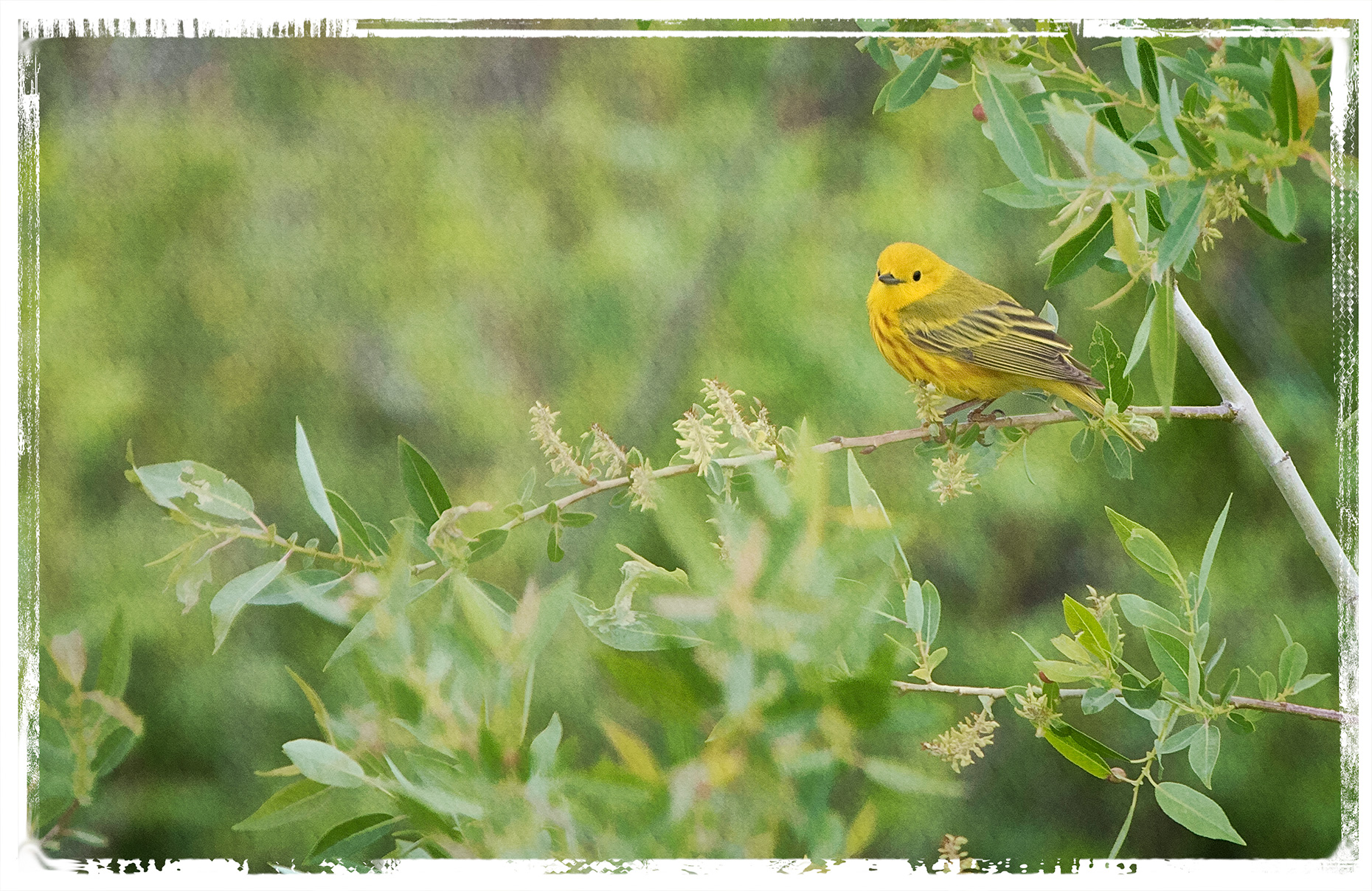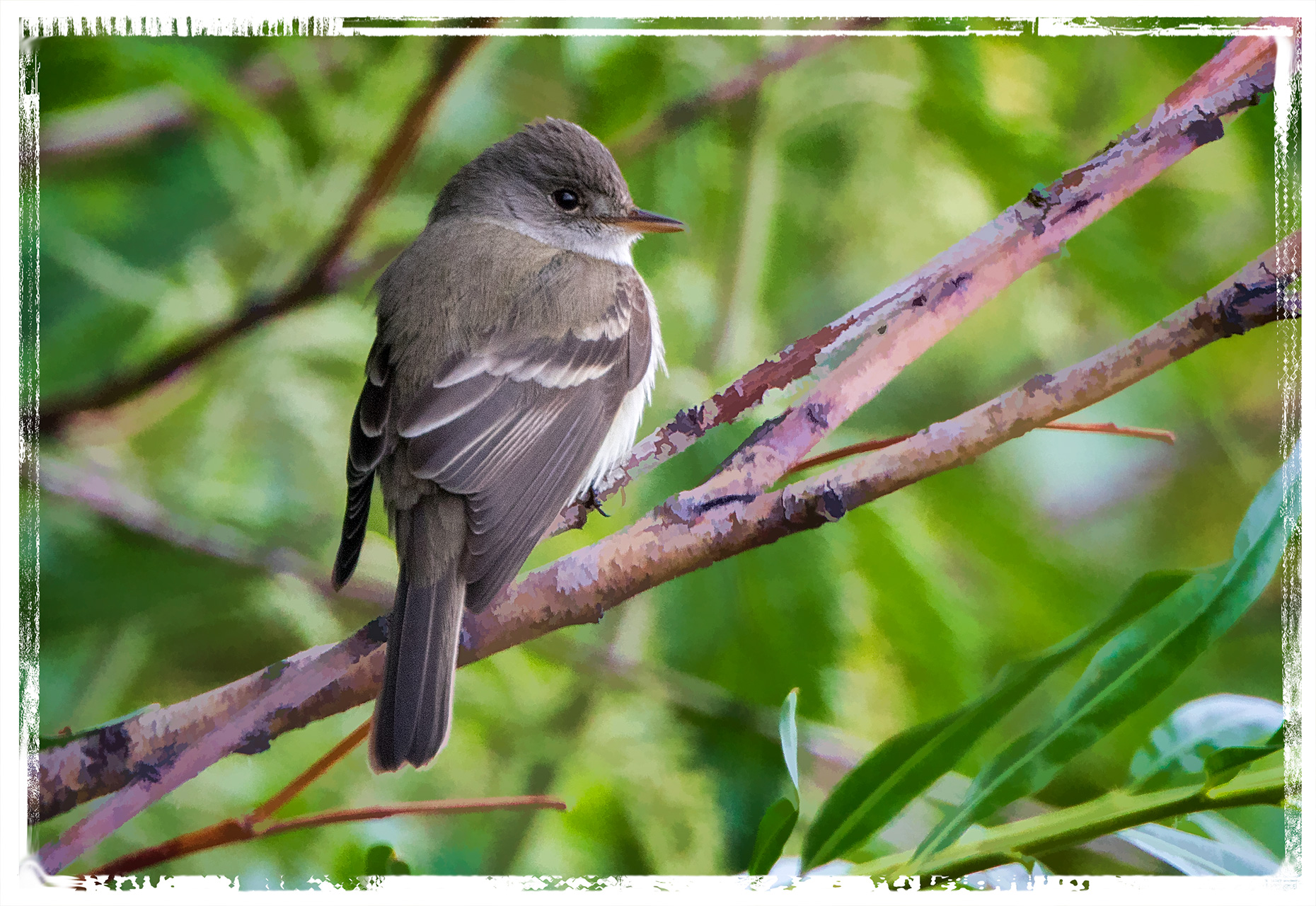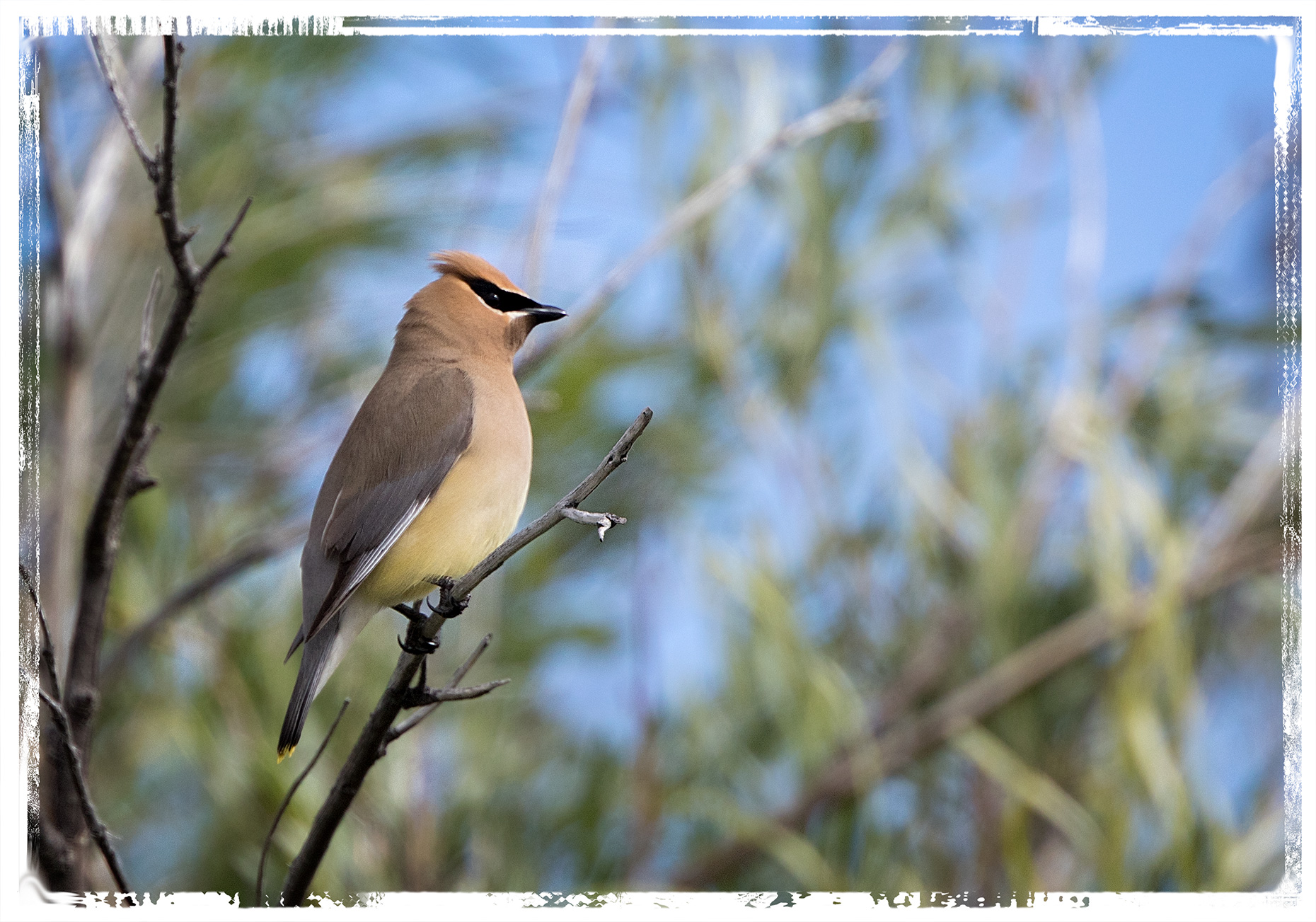Although we go to Bear River primarily to look for Avocet and Black-necked Stilt babies, we photograph any babies we see — with the possible exception of Canada Geese goslings, because we don’t see that many. Even when we do see them, it’s usually difficult to get good pictures.
Not sure whether it was the intervening grass or simply my expensive camera’s inability to find anything to focus on, but most of the pictures we took of these young Pied Bill Grebes were slightly out of focus,
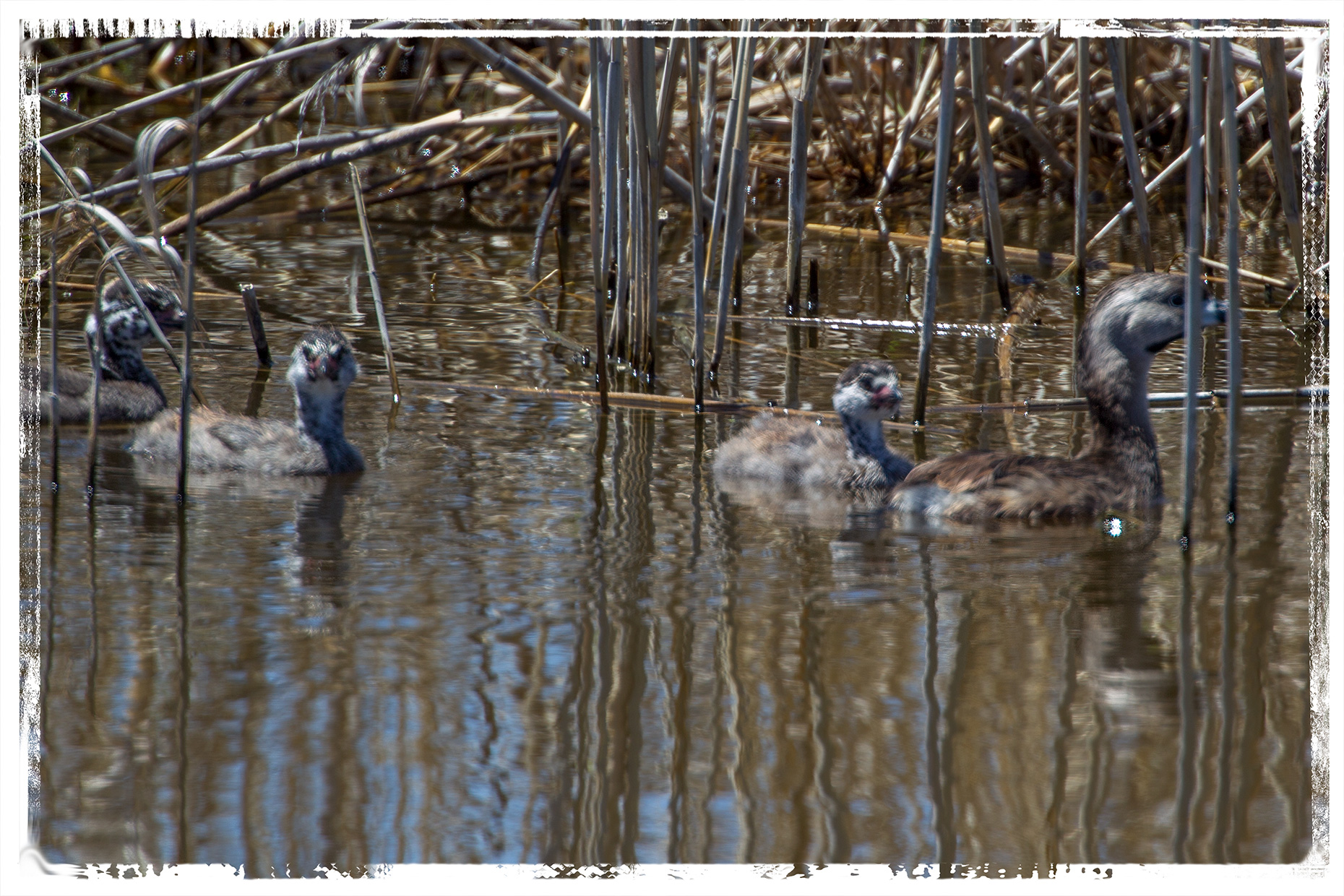
though this is still a better view than we ever got without binoculars.
When your very survival depends upon camouflage
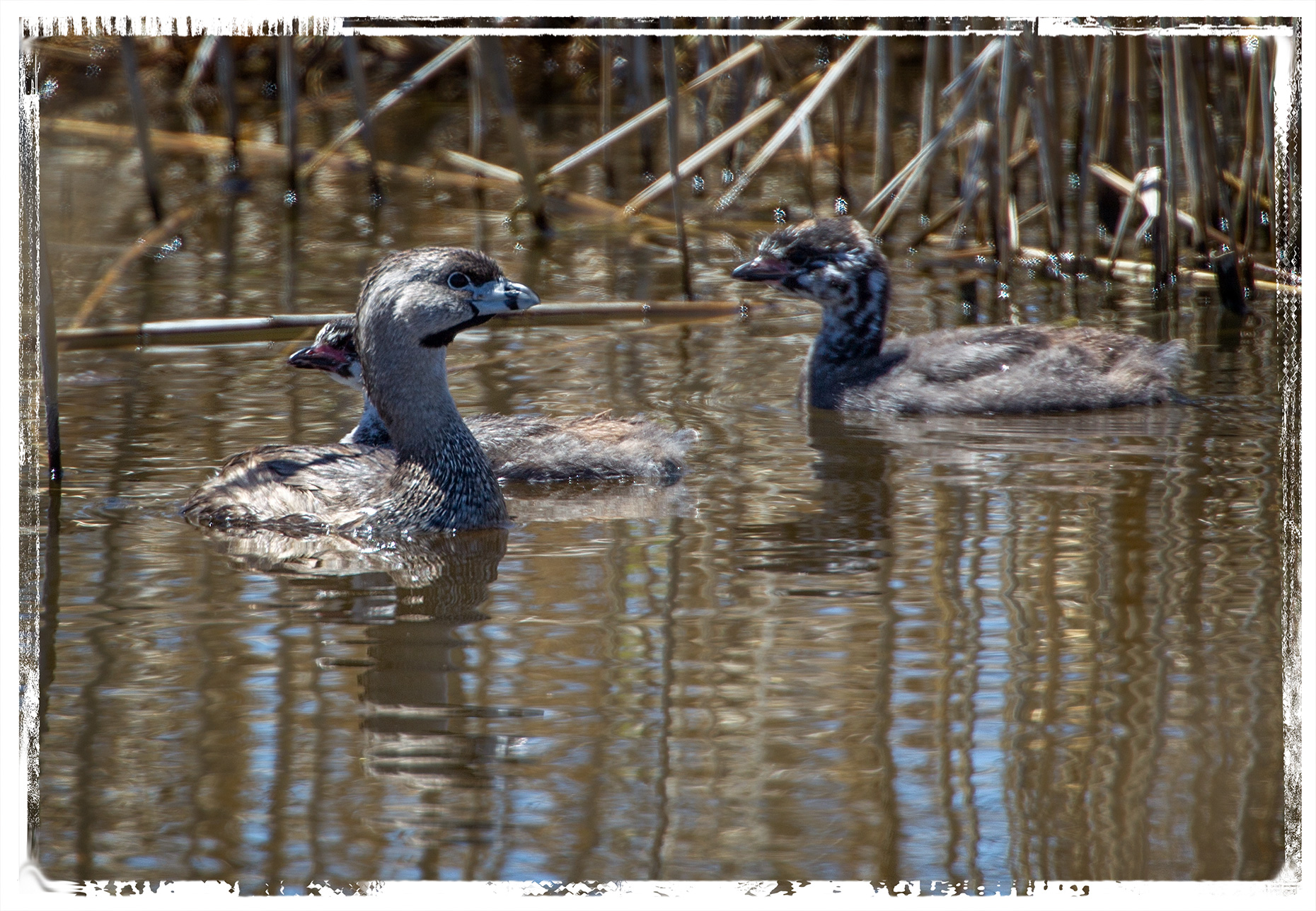
it’s probably a good thing to blend in with the reeds you’re hiding in.
The shots were a little better on the second day when we spotted them in better light and just outside the reeds, but they were a long way away even for my 1000mm lens.
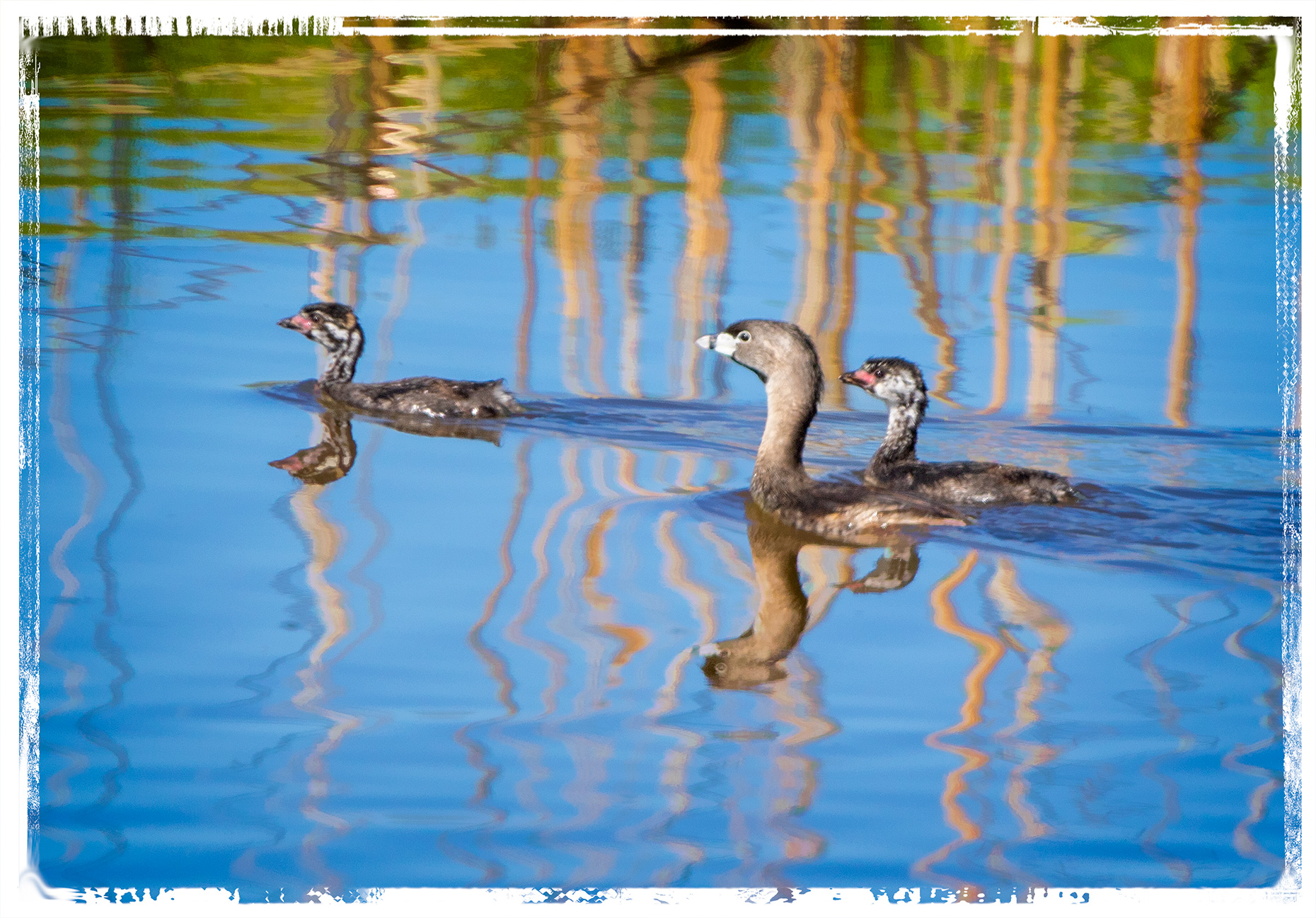
I guess this shot that’s not as heavily cropped is my favorite,

though it doesn’t do as good of a job of showing the striking heads in the young grebes.








